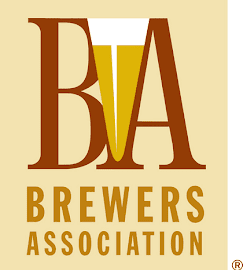Beer brings happiness; non-craft beer more so.
If the phrase 'industrial brewing' makes your lip curl like a wine drinker on first encountering a Belgian brown sour, I’m afraid you don’t really understand beer. Dismissing mass-market beers is like dismissing the Ford Focus and saying F1 racers are the only valid form of motor car. Some terrible crimes have been committed under the banner of industrial beer, that’s true. But overall, industrial beer has brought more happiness to the mass of humanity than craft beer ever will.
That was beer historian Martyn Cornell, at Zythophile, in a story otherwise about this ...
So, what was it like, the ancient lager Carlsberg spent two years and hundreds of thousands of kroner recreating, resurrecting yeast out of a bottle dating back to 1883, pulling out 130-year-old brewing records, growing an ancient barley variety, hiring a floor maltings, working out the most likely hop varieties to use, reproducing the original brewing water, having oak casks made in a Lithuanian cooperage, making moulds of vintage bottles so that new versions could be hand-blown, and then flying in dozens of journalists and beer writers to Copenhagen from as far away as Malaysia and California to drink the result.
It was … OK.
****************
Dry politics
Dissatisfied with the Presidential choices this year? There IS another candidate for President.The Prohibition Party is the oldest independent third-party still active. Founded in 1869, it remains “opposed [to] the manufacture, distribution, and sale of alcoholic beverages.” Its presidential candidate this election is Jim Hedges of Pennsylvania.
Jay Brooks (a beer writer, not a candidate) has the rest of the story at the Brookston Beer Bulletin.
*****************
All About Beer gets lost in Richmond.
In "Explore Richmond: 48 Hours in Richmond, Virginia" (July 2016: Vol. 27, no.3) —a guide to the beer and brewery scene of the city— All About Beer magazine makes no mention of Legend Brewing, that city's (and Virginia's) oldest continuously operating 'craft' brewery (since 1994).John Holl, editor of All About Beer, responded on Twitter:
Thanks for reading, Tom! Print constraints means that not everyone gets in. But hope folks spend more than a weekend in town.
A representative of Legend Brewing also responded:
We're just a big yellow building and probably the easiest brewery to find.
*****************
It isn't just about the hops.
The [U.S.] Brewers Association has joined the Brewing and Malting Barley Research Institute (BMBRI) as a corporate associate member. The BMBRI works to identify and evaluate barley varieties that are suitable for the production of high quality malt and beer.Joining with the Brewing and Malting Barley Research Institute to work toward this is a good move for the [U.S.] Brewers Association, and for American 'craft' brewers. Macro brewers want neutrally flavored barley while 'craft' brewers prefer more highly flavored varieties, whether for base malt or specialty. And up to this point, barley has been developed and grown for the macros.
In late 2011 thru the first half of 2012, members of the Brewers Association Pipeline Committee participated in a survey to ascertain their preferred malt characteristics. Members were asked to describe the base malt characteristics best suited for their brands. [...] Respondents placed the most emphasis on flavor, calling it priority one. Respondents agreed that recent 10- to 25-year trend towards ever increasing flavor neutrality must be reversed. At the same time brewers recognize that this is the most difficult trait to communicate with specific granularity for reasons having to do with basic knowledge gaps of how and when flavor arises and minus a lexicon for describing malt flavors.
The BA identifies other traits of barley for malting for 'craft brewing:
- Lower free amino nitrogen (“FAN”)
- Lower total protein
- Lower diastatic power (“DP”)
- Lower Kolbach Index (ratio of soluble protein to total protein, or “S/T”)
- Read more at the [U.S.] Brewers Association.
- And here's a related story about a University of Oregon program to develop malt varieties for 'craft' breweries.
***************
Unbeautiful swimmers
"This is a great IPA," the beer-store clerk told me. On his recommendation, I purchased a 6-pack of cans, took them home, and opened one in anticipation. Here is what I saw and tasted: A sinking mass of sludgy floaters in the bottom of a turbid mess, with only a hint of IPA flavor, tasting melony-fruity and not bitter, and, in fact, metallic-sweet. The date imprinted on the bottom the can, indicating a drink-by date or canning date, was indeterminate at best.'Craft' breweries, with some exceptions, don't have the resources that macro-brewery conglomerates do to enforce the freshness of their bottles, cans, and kegs once they are shipped from the plants. But they —large breweries or small— are still responsible for informing their customers what is fresh and what isn't. Not doing so is a failure of 'craft.' It is not an unusual occurrence; it's far too common.
Not a great IPA; not great at all.
******************
The Unbearable Corniness of Craft
For years, the macro-breweries have been using unprocessed corn and rice, 'breakfast' grains, as adjuncts to barley malt in their beers. For years, 'craft' brewers have decried and derided the practice. But now some 'craft' breweries themselves are using these grains, not in pure form but with highly processed, chemical-laden breakfast cereals, such as Captain Crunch and Count Chocula, produced by far-from-small or independent mega-conglomerates. That's disingenuous and un-'craft.'Read more at Beer & Brewing.
******************
The Prosody of Bitter
I’d forgotten about bitter, forgotten about that citrusy-slow build of sweetness, the words of toffee and hop spice, the crosstown traffic, the blistering bitterness, the dryness, the siren call of English hops, the warp and waft of the raw materials, the full body, its common touch (at which I have unforgivably sneered), the monstrosity, the leviathan, the well water hoisted, the sheer sheerness of it all. And as I delved further and further into my glass of Gadds No 3, I realised how much I’d forgotten about bitter and how much I had missed it.— British beer writer Adrian Tierney-Jones, at Called to the Bar.
-----more-----
- Sunday Facebook Check-out is a wrap-up of a few recent 'quick' posts at YFGF's companion Facebook page.
- For more from YFGF:
- Follow on Twitter: @Cizauskas.
- Like on Facebook: YoursForGoodFermentables.
- Follow on Flickr: Cizauskas.
- Follow on Instagram: @tcizauskas.














No comments:
Post a Comment
Comment here ...